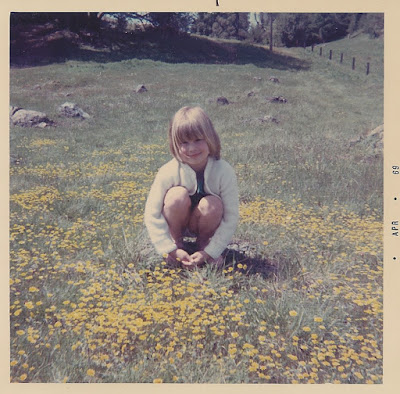A child's first introduction to writing letters often starts with the child's name. If your child is showing an interest in writing letters, try this lesson on learning how to write your name!
Indirect Aim: Writing.
Direct Aim: To make the child aware that sounds have symbols.
Age: 4 to 5
Materials: Sandpaper letters, pencil, paper.


Example of child's name: Sarah
1. "Today we are going to write your name!" (Or you can just write the first letter of the child's name: "Today we are going to write the first letter in your name!") "What is the first letter in your name?" If the child gives the name for the letter 's' (es) you say, "Its name is 's' (es) but it says the sound ‘sss’ like a snake; do we call you es-sarah? or sss-sarah; do we call a snake an es-nake or a sss-nake?"
If the child has a blend, like 'ch' for Charlie, say "The letters 'C' (see) and 'h' (ay-chu) make the sound 'ch' like 'chair'! Do we call it a 'see ay-chu air'? No, we call it a chair."
2. Take any kind of paper (or chalkboard) and a normal-sized pencil (or white chalk), and start with the first letter in the child’s name. Use a capital letter! Trace the capital letter 'S' with two fingers (use pointing finger and middle finger and always top to bottom, left to write) then write it. Do a whole line of the letter 'S', if the child can wait! Or, at some point, ask the child to have a turn to trace the letter 'S' and write it. Trace it first, then write it, trace it again, then write it again, and repeat this pattern of tracing and writing, tracing and writing.
Later, another day, use mathematics paper (squared paper) and try to get the child to write the letter 'S' into the squares. Try to get her to write a whole line (ten squares per line is OK).
3. "Now we are going to write the second letter in your name!" (Or you can write the second letter another day.) "The second letter in your name is -------" (for our example, Sarah, it would be 'a').
4. Use the lowercase letter 'a'! Trace the lowercase letter 'a' with two fingers (use pointing finger and middle finger and always top to bottom, left to write) then write it. Do a whole line of the letter 'a', if the child can wait! Or, at some point, ask the child to have a turn to trace the letter 'a' and write it. Trace it first, then write it, trace it again, then write it again, and repeat this pattern of tracing and writing, tracing and writing.
Later, another day, use mathematics paper (squared paper) and try to get the child to write the letter into the squares. Try to get her to write a whole line (ten squares per line is OK).
Continue with the next letter in the child's name, or wait until another day.
You can also have the child's name written out on a piece of paper or cardstock, and place it near the pencils and paper for her to go and get whenever she wants to write her name. Later, she will want to write her sibling's or her friend's name, have that child's name written out on a piece of paper or cardstock, and place it near the pencils and paper for her to go and get whenever she wants to write it.
Optional: You can use dots to write the letter(s) and have the child trace over the dots.
Markers: allow the child to decorate her paper with markers after she has practiced writing her name in pencil, HOWEVER, for children who have difficulty writing (they are hard to motivate) allow them to use markers to practice writing their name, just remind them what happens if they make a mistake--they cannot erase it, instead they can cross it out, or try again (using the same paper!).
Encourage the child to always write her name on her artwork! ~Lisa Nolan
Photo (of me) by J. Holmes

